BIOPLASTICS_PART I
General ingredients:
- Agar or Gelatin
- Glycerine
- White vinegar
- Hot water
- Food coloring
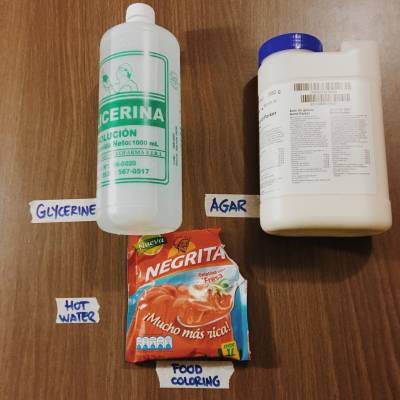
The Process
- I watched some tutorials about making a bioplastic using agar or gelatin. I found some recipes on this page that helped me to have an idea about the basic amounts to start experimenting.
- I decided to use Agar in my first experiment because we had that ingredient at the lab.
- I started mixing the ingredients in different amounts looking for the best results based on consistency, flexibility, strength, and elasticity. Here are the recipes I tried:
-.-.-.-.-.-.-.-.-.-.-.-.-.-.-.-.-.-.-.-.-.-.-.-.-.-.-.-.-.-.-.-.-.-.-.-.-.-.-.-.-.-.-.-.-.-.-.-.-.-.-.-.-.-.-.-.-.-.-.-.-.-.-.-.-.-.-.-.-.-.-.-.-.-.-.-.-.-.-.-.-.-.-.-.-.-.-.-.-.-.-.-.-.-.-.-.-.-.-.-.-.-.-.-.-.-.-.-.-
RECIPE #01
| Hot water | White vinegar | Glycerine | Agar | Gelatin / food coloring | Cooking time |
|---|---|---|---|---|---|
| 180 ml. | 15 ml. | 10 ml. | 36 gr. | 2 spoon | 4 min. |
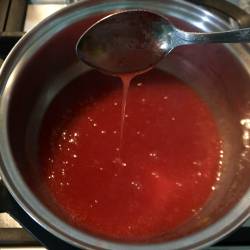 1
1 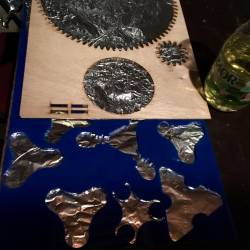 2
2 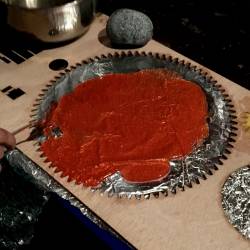 3
3 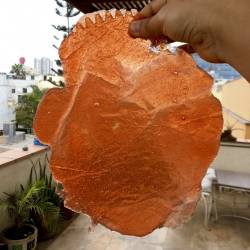 4
4
1. Pay attention to the consistency of the mixture
2. Wrap the surface with aluminum foil
3. Spread a few oil on the surface to remove the mold easily
3. Spread the bioplastic over the surface
4. After 30 minutes my first bioplastic was done.
-.-.-.-.-.-.-.-.-.-.-.-.-.-.-.-.-.-.-.-.-.-.-.-.-.-.-.-.-.-.-.-.-.-.-.-.-.-.-.-.-.-.-.-.-.-.-.-.-.-.-.-.-.-.-.-.-.-.-.-.-.-.-.-.-.-.-.-.-.-.-.-.-.-.-.-.-.-.-.-.-.-.-.-.-.-.-.-.-.-.-.-.-.-.-.-.-.-.-.-.-.-.-.-.-.-.-.-.-
RECIPE #02
| Hot water | White vinegar | Glycerine | Agar | Gelatin / food coloring | Cooking time |
|---|---|---|---|---|---|
| 60 ml. | 5 ml. | 10 ml. | 18 gr. | - | 2 min. |
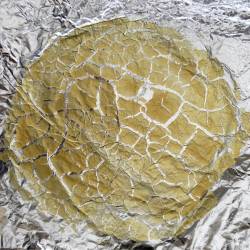 1
1
1. The mixture never dried,
-.-.-.-.-.-.-.-.-.-.-.-.-.-.-.-.-.-.-.-.-.-.-.-.-.-.-.-.-.-.-.-.-.-.-.-.-.-.-.-.-.-.-.-.-.-.-.-.-.-.-.-.-.-.-.-.-.-.-.-.-.-.-.-.-.-.-.-.-.-.-.-.-.-.-.-.-.-.-.-.-.-.-.-.-.-.-.-.-.-.-.-.-.-.-.-.-.-.-.-.-.-.-.-.-.-.-.-.-
RECIPE #03
| Hot water | White vinegar | Glycerine | Agar | Gelatin / food coloring | Cooking time |
|---|---|---|---|---|---|
| 60 ml. | 5 ml. | 3 ml. | 18 gr. | - | 2 min. |
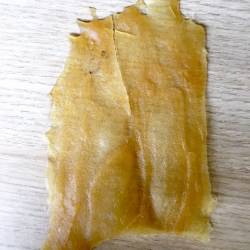 1.
1.
1. The mixture were very vicour and without elasticity
-.-.-.-.-.-.-.-.-.-.-.-.-.-.-.-.-.-.-.-.-.-.-.-.-.-.-.-.-.-.-.-.-.-.-.-.-.-.-.-.-.-.-.-.-.-.-.-.-.-.-.-.-.-.-.-.-.-.-.-.-.-.-.-.-.-.-.-.-.-.-.-.-.-.-.-.-.-.-.-.-.-.-.-.-.-.-.-.-.-.-.-.-.-.-.-.-.-.-.-.-.-.-.-.-.-.-.-.-
RECIPE #04
| Hot water | White vinegar | Glycerine | Agar | Gelatin / food coloring | Cooking time |
|---|---|---|---|---|---|
| 60 ml. | 5 ml. | 3 ml. | 12 gr. | - | 4 min |
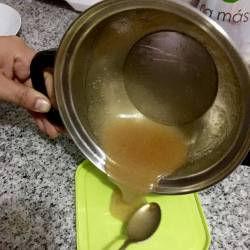 1
1 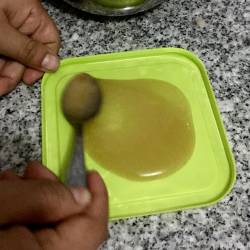 2
2 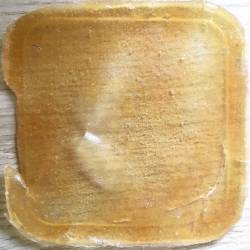 3
3
1. Pay attention to the consistency of the mixture
2. Spread the mixture uniformly over the surface (I didn't need aluminum folding because the surface was plastic)
3. After 15 minutes I could remove the bioplastic layer from the mold. The layer was about 3mm width.
-.-.-.-.-.-.-.-.-.-.-.-.-.-.-.-.-.-.-.-.-.-.-.-.-.-.-.-.-.-.-.-.-.-.-.-.-.-.-.-.-.-.-.-.-.-.-.-.-.-.-.-.-.-.-.-.-.-.-.-.-.-.-.-.-.-.-.-.-.-.-.-.-.-.-.-.-.-.-.-.-.-.-.-.-.-.-.-.-.-.-.-.-.-.-.-.-.-.-.-.-.-.-.-.-.-.-.-.-
RECIPE #05
| Hot water | White vinegar | Glycerine | Agar | Gelatin / food coloring | Cooking time |
|---|---|---|---|---|---|
| 60 ml. | 10 ml. | 10 ml. | 12 gr. | - | 2-3 min. |
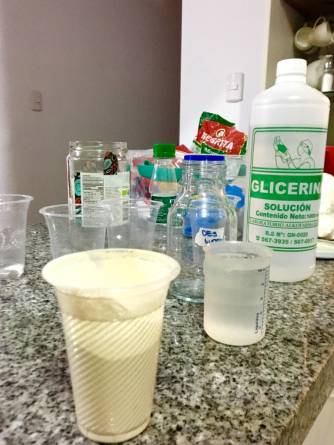 1
1 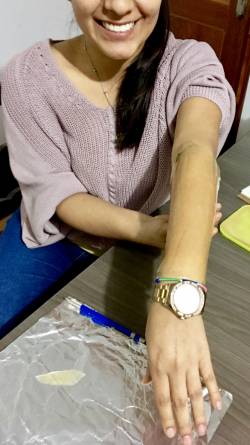 2
2 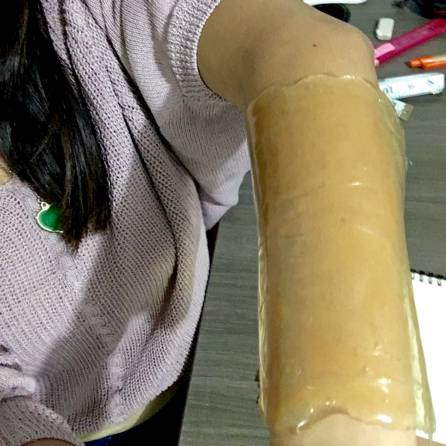 3
3
1. Some of the ingredients I used to make most of the mixtures.
2. I made the same process of the last 2 tests. Finally, I got the layer I was looking for. It was about 3mm thickness.
3. The layer dried in about 15 minutes and I really liked the transparency of this layer, even though it was a bit yellow doubt to the agar.
-.-.-.-.-.-.-.-.-.-.-.-.-.-.-.-.-.-.-.-.-.-.-.-.-.-.-.-.-.-.-.-.-.-.-.-.-.-.-.-.-.-.-.-.-.-.-.-.-.-.-.-.-.-.-.-.-.-.-.-.-.-.-.-.-.-.-.-.-.-.-.-.-.-.-.-.-.-.-.-.-.-.-.-.-.-.-.-.-.-.-.-.-.-.-.-.-.-.-.-.-.-.-.-.-.-.-.-.-
Resume table
- I watched some tutorials about making a bioplastic using agar or gelatin. I found some recipes on this page that helped me to have an idea about the basic amounts to start experimenting.
-.-.-.-.-.-.-.-.-.-.-.-.-.-.-.-.-.-.-.-.-.-.-.-.-.-.-.-.-.-.-.-.-.-.-.-.-.-.-.-.-.-.-.-.-.-.-.-.-.-.-.-.-.-.-.-.-.-.-.-.-.-.-.-.-.-.-.-.-.-.-.-.-.-.-.-.-.-.-.-.-.-.-.-.-.-.-.-.-.-.-.-.-.-.-.-.-.-.-.-.-.-.-.-.-.-.-.-.-
Exploring
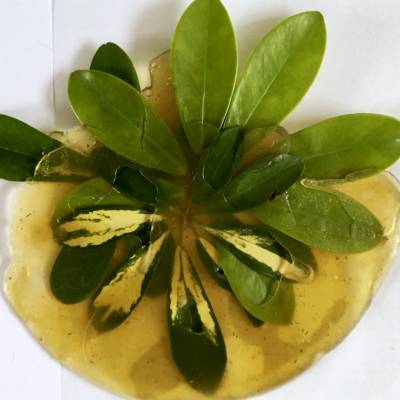
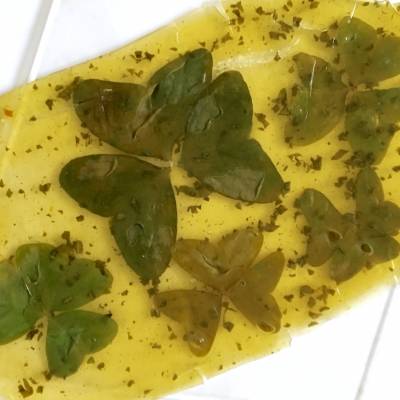
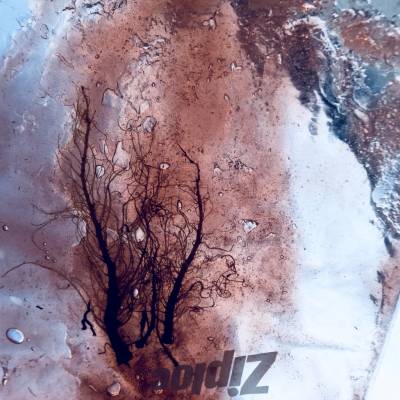
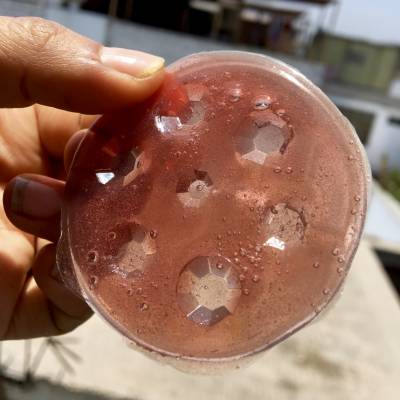
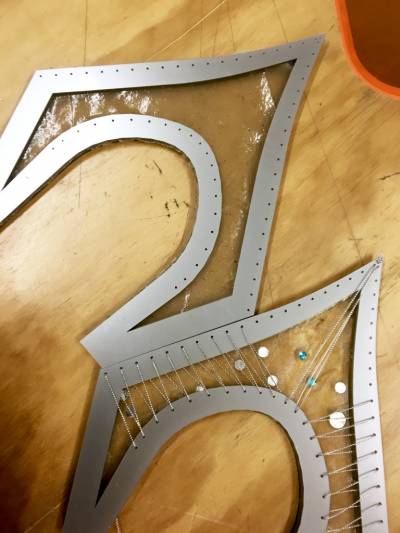
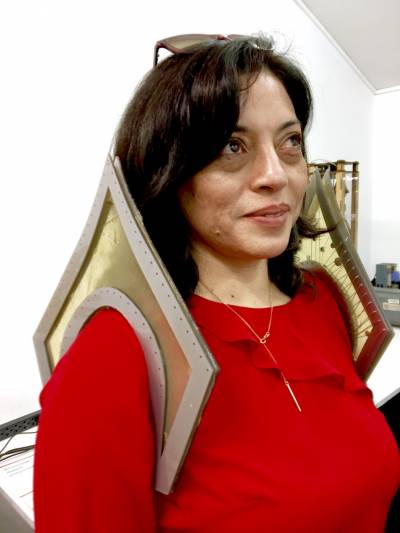
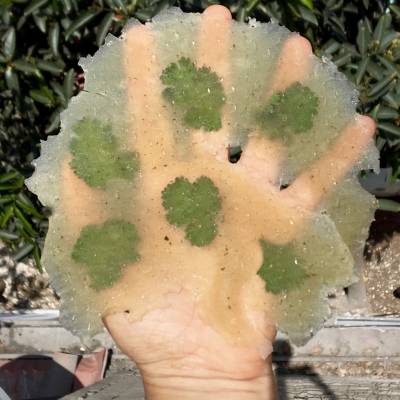
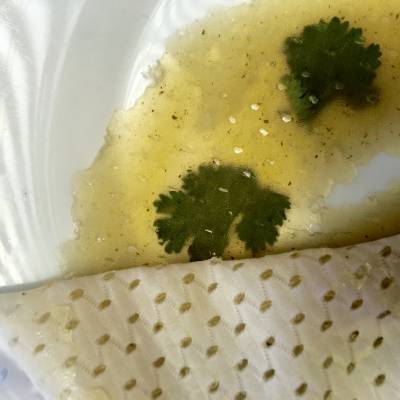
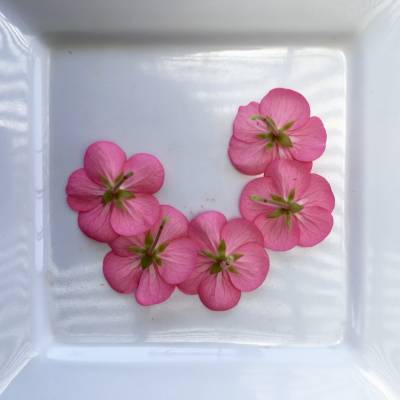
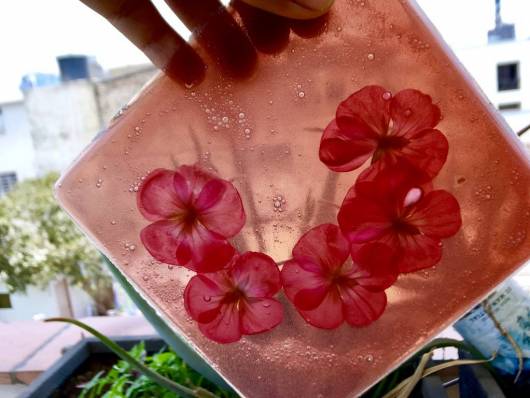
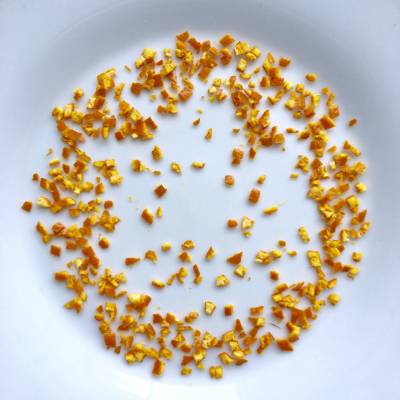
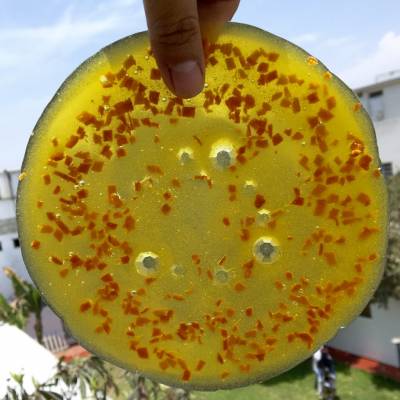
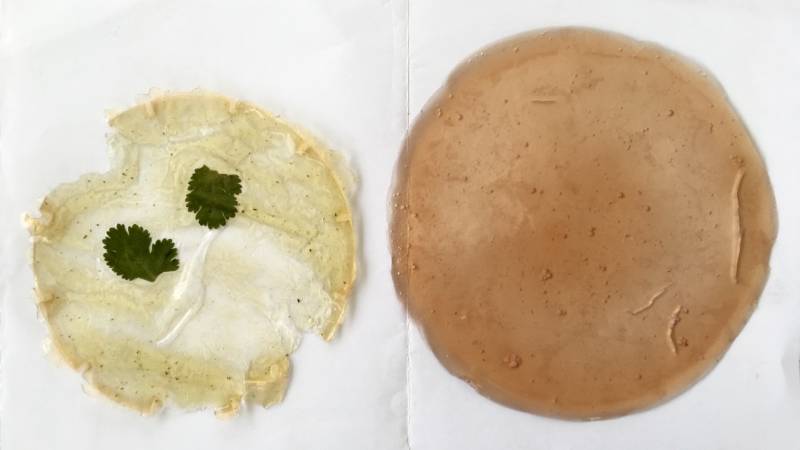
BIOPLASTICS_PART II
General ingredients:
- Cornstarch or Gelatin
- Glycerine
- White vinegar
- Distilled water
- Food coloring
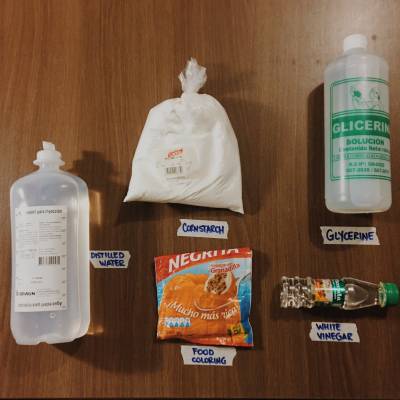
As I wanted to see the bioplastic behavior adding cornstarch, I spread the mixture on a 3D printed model of my body I have from other assignment and I realized that this recipe made the bioplastic stretchier. I wanted to explore more but as I got the results I wanted with the other recipes I will leave it to other time.